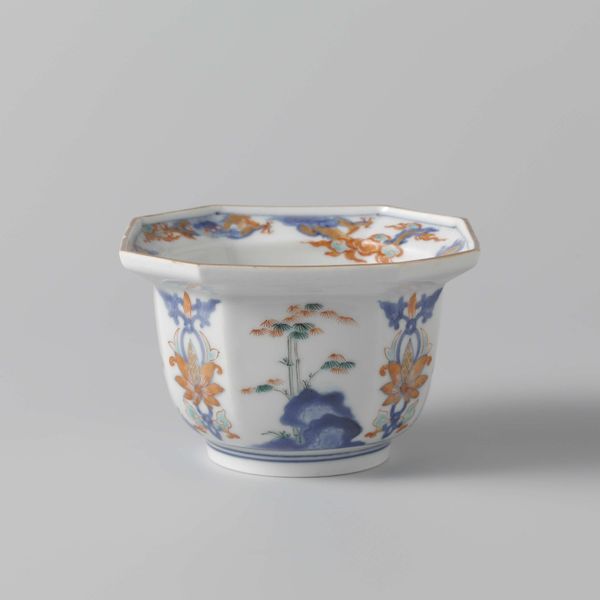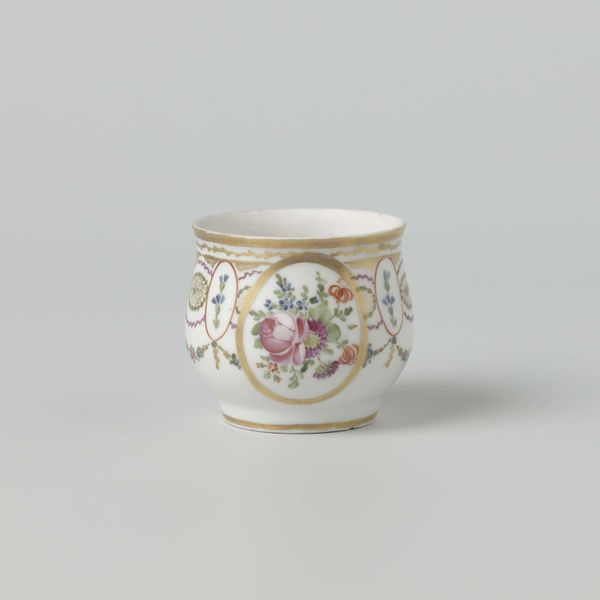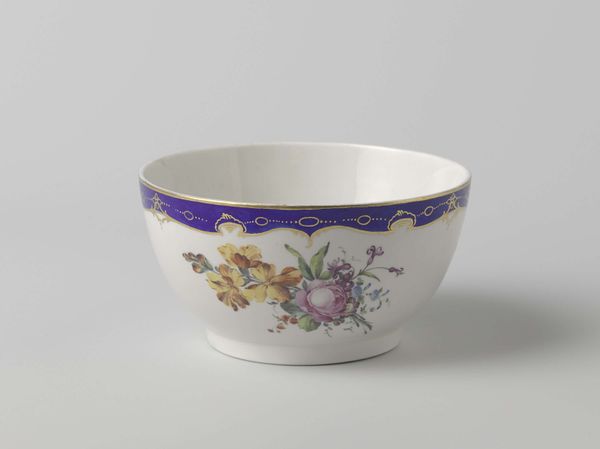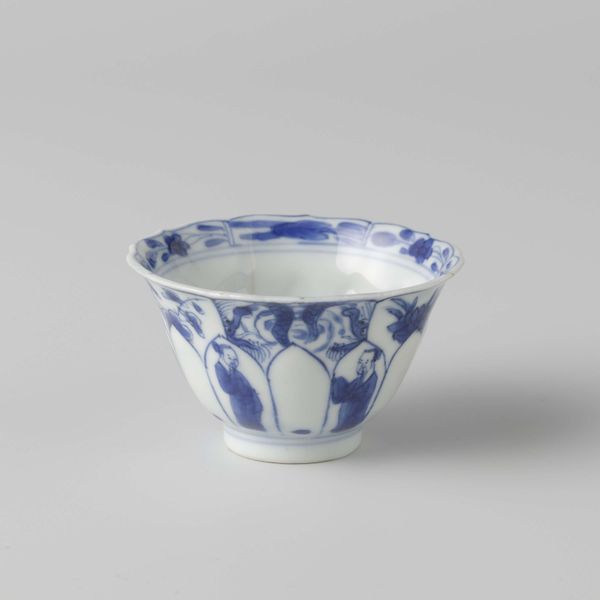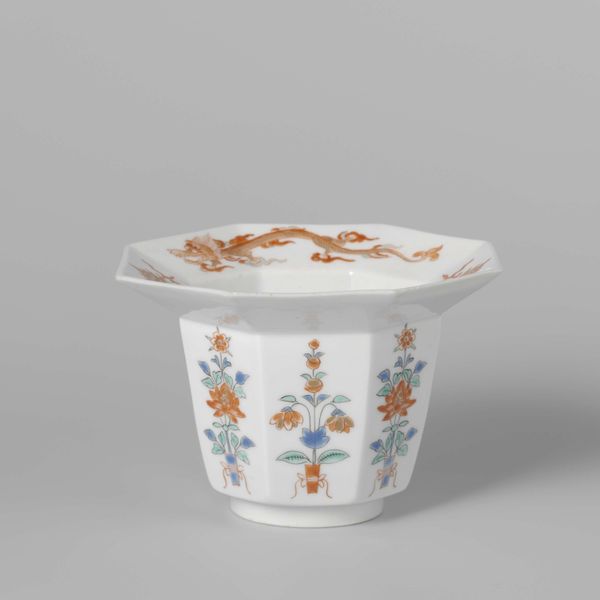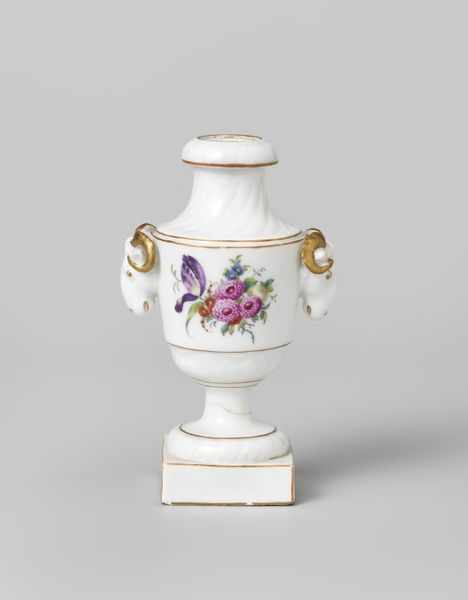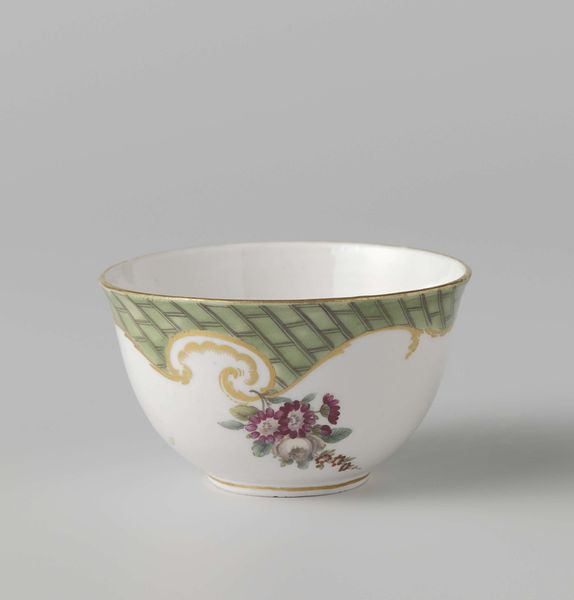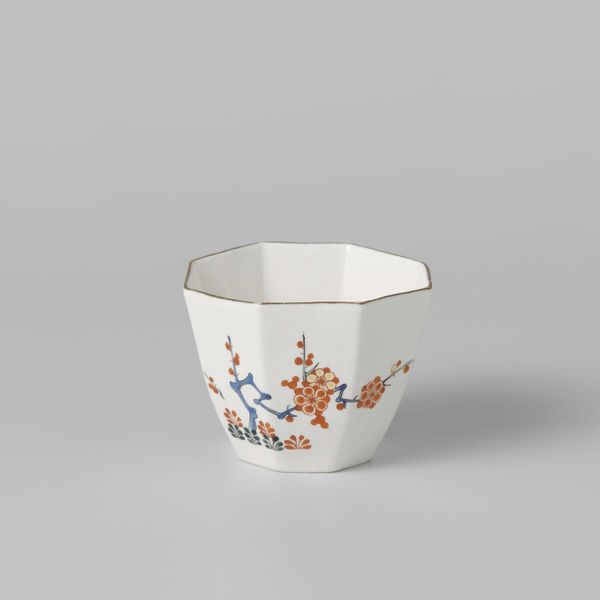
Dimensions: height 9.4 cm, diameter 12.7 cm, diameter 4.9 cm
Copyright: Rijks Museum: Open Domain
Curator: This piece, ladies and gentlemen, is a Loosdrecht ceramic cuspidor, dating from around 1778 to 1782. Editor: Right away, I'm struck by how ornate it is for something designed to catch spit! It feels almost sacrilegious, adorning an object of that nature with Rococo-style floral decorations. Curator: That tension, that juxtaposition, is precisely what makes it fascinating. Imagine the labor, the skill required to create something so delicate out of earthenware only to be used for, shall we say, expectoration. Editor: Exactly! It's like gilding the outhouse, isn’t it? Thinking about the production...Loosdrecht was attempting to break the monopoly of porcelain. These makers had to fight for recognition! Was this ornate design, I wonder, part of that push for high-status acknowledgment through materials and decorative arts? Curator: Indeed! And see how the central painting, nestled inside the blue netting, seems almost to elevate the activity. It adds a playful hint of human intimacy to a frankly rude act, making this quite the unique, strange luxury object. Does it not make one think what a story could the people inside the oval picture be telling. Editor: I imagine someone meticulously crafting each piece while being mindful of the final, unsavory purpose it would serve. It's almost as if the exquisite detail becomes a way to elevate—or perhaps mask—the realities of bodily functions, isn’t it? What a class performance it would make! The flower adds the aroma, so it distracts viewers as it embraces function and purpose together. Curator: A gilded cage for germs, in a way. It shows the constant human ambition of trying to make functional mundane activities seem higher art! I believe that the object showcases the high-minded ambition but humble production value. Editor: Absolutely. Thinking of it as "material culture" invites a reflection on hygiene practices, material obsession, and class performance. Each contributes to our understanding and contextualizing of a "common" item. Curator: In a way, it captures the tensions of 18th-century society – the desire for refinement versus the messy realities of human life. Editor: Right—the artist, and indeed the Loosdrecht manufactory, wrestled elegance with function to produce an unlikely objet d’art. Thank you so much for sharing. Curator: Yes, it's truly been an exercise in reflection; thank you.
